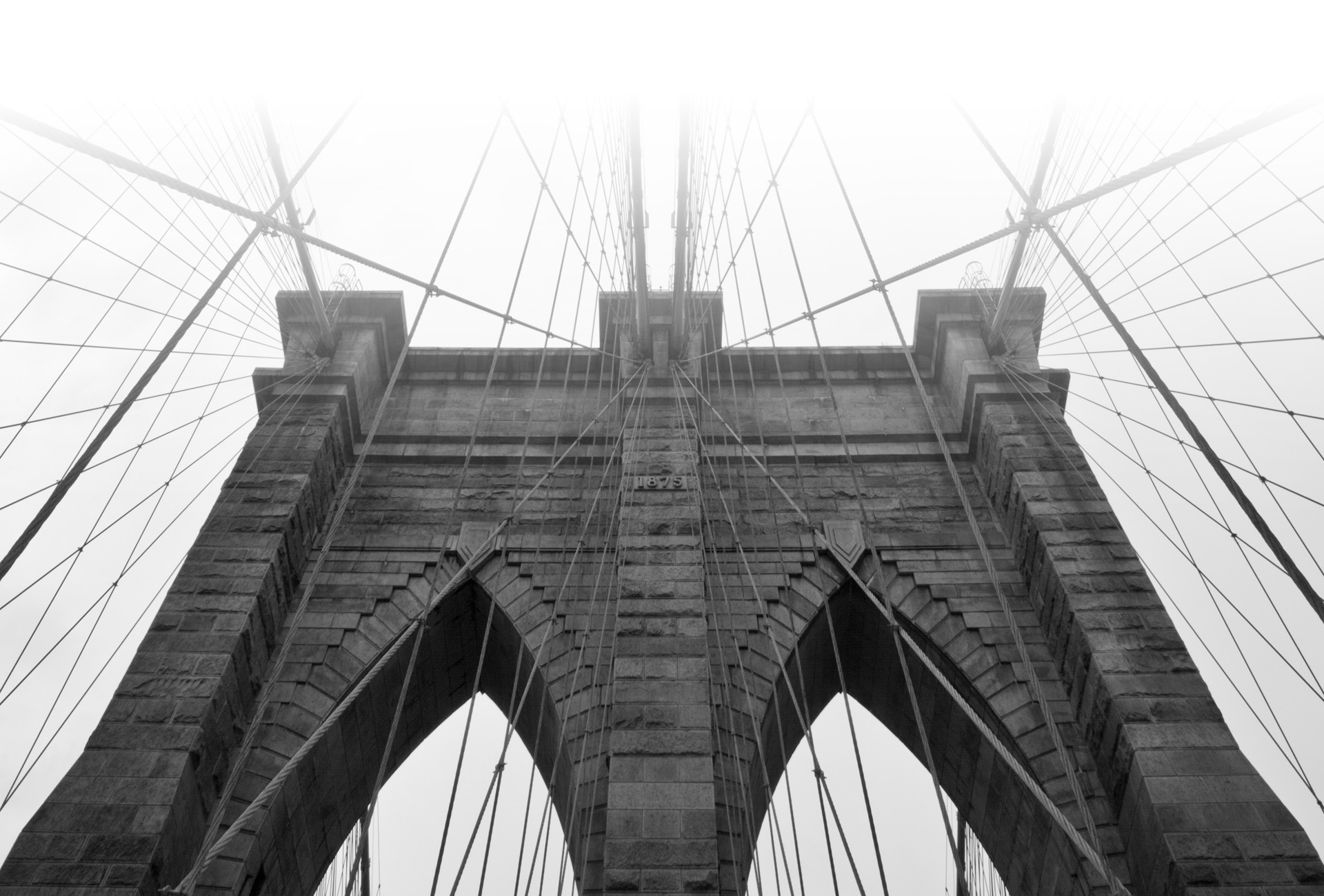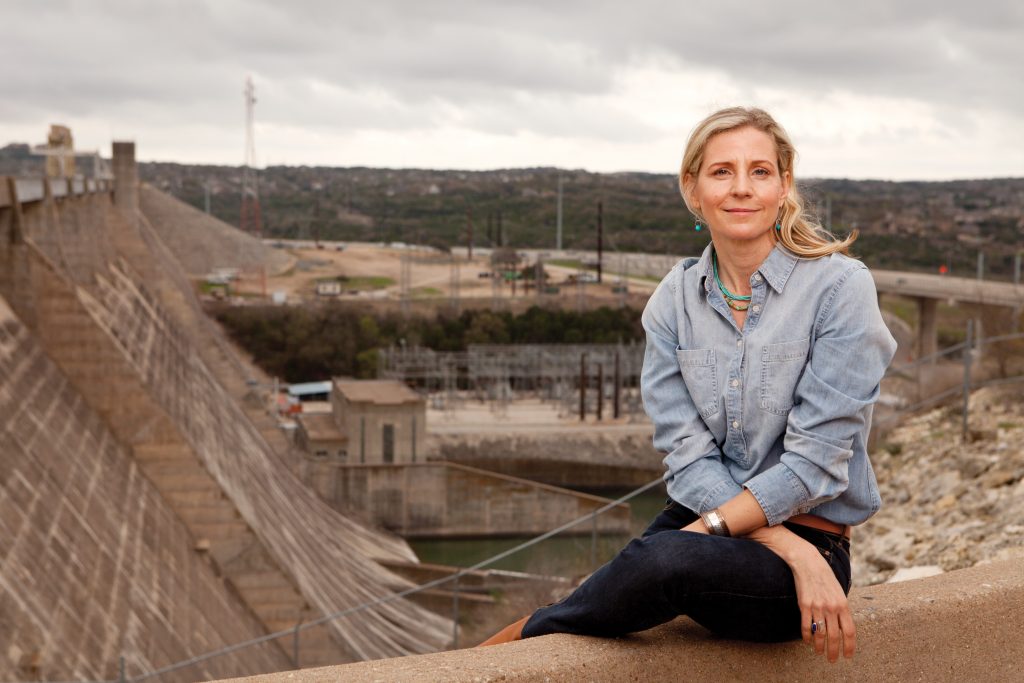Connecting STEM and the Humanities to Fix America’s Failing Infrastructure
The next time you get behind the wheel, consider this: The American Society of Civil Engineers (ASCE) gave our major urban highways a big, fat “D” on their infrastructure report card.
A “D” on a report card usually means you’re getting grounded, and in a sense all of us who depend on highways are in danger of being grounded by a crumbling, overloaded system that gets little more than half of the $170 billion the Federal Highway Administration says is needed to fix it. That’s just the roads. For all of America’s infrastructure — including bridges, dams, airports and utilities — the ASCE gives us a D+ and says we need to invest $3.6 trillion by 2020 to significantly improve that grade.
It’s not all about money and mixing cement, however. According to Erika Bsumek, an associate professor of history at UT Austin, one major repair should be the bridge that used to connect STEM (science, technology, engineering and math) and the humanities.
That is why she launched an undergraduate history class in spring 2014 — Building America: Engineering Society and Culture, 1868-1980 — to teach humanities students how the technology surrounding them works and to teach STEM majors how history and politics shape technological advances. STEM disciplines can make a bridge stand up, but the humanities tell us why it exists.
“We have a tendency to artificially compartmentalize the world into discrete disciplines. Our classroom serves as a place to connect, rather than divide,” says Bsumek, who notes that the rift between disciplines — especially since World War II — has devalued the liberal arts and sterilized the specialized training of STEM students.
“During the 1950s and ’60s, our vision of society was shaped by the Cold War. America needed an influx of engineers to build the interstate highways and the dams and national defense systems and missile silos,” Bsumek says. “Defense spending went way up, and the engineering curriculum changed. Engineers used to be trained to be more like Renaissance men (they were mostly men), but in the name of streamlining their training, engineering programs cut out courses in the liberal arts and humanities.”
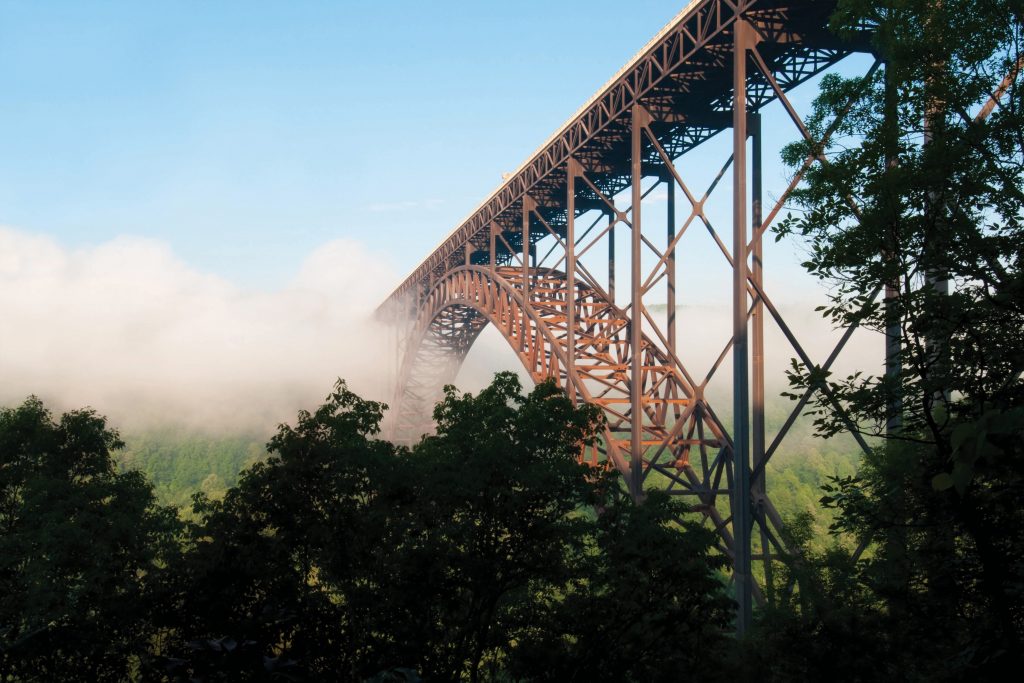
She says this development was a major concern for noted physicist Richard C. Bradley. In an address to the American Society for Engineering Education in 1962, he said engineers have an enormous responsibility because “they are more than just doers or servants of society. They are also policy setters … I hope the day may yet come when no highway or reclamation commissioner, for example, is innocent in the knowledge of ecology or of the history of other civilizations.”
Bradley’s statement led Bsumek to create the Building America class. “How do we get back to Bradley’s vision, where we think about society and population and politics and government and economy and gender and race — all of these different aspects of society, with technology as just one important subcategory? What happens if you put engineers and historians or natural scientists and artists in a room together? They actually have a lot to say to each other.”
The solutions to our infrastructure challenges, it seems, will probably result from such group efforts involving diverse disciplines. In that sense, Bsumek’s History 317 class is a model for how our next generations might approach infrastructure challenges.
Making the Connection
The first objective of the class is to draw connections, Bsumek says. “I ask students ‘What do you have in common with each other? You all share this planet, and you are all in this place at this exact moment. How do you draw connections between you and those around you?’”
The Building America students work in carefully chosen groups of eight, each group representing a variety of majors. Bsumek says each major brings a different knowledge set to the table, and the students learn from one another.
“Our first class unit is on the Brooklyn Bridge. We look at issues such as the growth of urban America, the post-Civil War period, immigration, tenements. But at the same time, there is technology and innovation, economic growth and decline … the Brooklyn Bridge is a good model for how they all come together,” Bsumek says. “What does the bridge do? It connects Manhattan and Brooklyn. Why do they need to be connected at that particular time? The reasons become pretty complex and multilayered.”
The same can be said for the group projects. One group of students approached the Brooklyn Bridge from the perspective of the Divi Blasii, a medieval church in Mühlhausen, Germany. The students not only learned that Johann Sebastian Bach was an organist in the church, but also that civil engineer John A. Roebling — designer of the Brooklyn Bridge — lived in Mühlhausen before emigrating to the U.S.
The Divi Blasii’s Gothic arches were an influence on Roebling, who wanted his bridge to be equal in grandeur to a soaring cathedral. Another group observed that just as cathedrals brought together people of all classes, so too did Roebling’s bridge as a cathedral for a new age that linked formerly separated populations. But the Gothic arches gave more than beauty to the bridge; their pointed shape also provided the structural stability that allowed for minimal material use, resulting not only in a bridge that has stood for more than 130 years, but also in a landmark that continues to stir the souls of writers and poets, painters and photographers.
Other groups explored how the bridge’s anchorages and cables suggested a cathedral’s buttresses, one system using tension while the other uses compression for structural support. Some students looked at how the suspension system gave rise to the development of the steel cable, and how this technical advancement connects back to the beauty we associate with suspension bridges in general. One group even tied the Brooklyn Bridge to the development of the Transcontinental Railroad.
“The students do a lot of detective work. I ask them ‘Why did people make certain living choices between 1870 and 1930?’ — and they loop it back into the Brooklyn Bridge question,” Bsumek says. “We look at multiple causes and effects — part of it is the building and part of it is society; we are continually flipping back and forth as we examine responses to culture, the environment and technology.
“This is a serious course asking serious questions about young people and their future, to get them to look at their world in different and more complex ways,” she says. “My agenda is to ask students to think about the connections that are going to be important in their lives. It’s what Bradley was talking about — he wasn’t just talking about engineering, or a bridge or an environment; he was talking about the way education works as an infrastructure that can help us build a better society, not just about how we educate our engineers.”
The students also benefit from guest lecturers who discuss various aspects of infrastructure, from the history of air conditioning to sustainable design methods. Among the lecturers is Kyle Shelton, a postdoctoral fellow at the Kinder Institute for Urban Research at Rice University and Bsumek’s former graduate teaching assistant.
“We have a tendency to artificially compartmentalize the world into discrete disciplines. Our classroom serves as a place to connect, rather than divide.”
Erika Bsumek
“Infrastructure needs to be viewed much more holistically and much more socially — it is socially constructed as much as anything else,” says Shelton, who guest lectures on the Interstate Highway System.
He says that to understand the infrastructure challenge, it is essential to know its origins and purpose. “To find those answers, you have to be willing to look at humanities disciplines. If you don’t recognize history, if you don’t acknowledge the roots of our infrastructural system and its shortcomings, we are bound to repeat the mistakes of the past.”
Shelton says people need to become more informed about infrastructure, and not just assume it is merely a product of one engineer or one firm saying, “It will go here and this is what it is going to look like.”
Rather, infrastructure is socially, politically and culturally constructed over decades, he says. “No single piece of infrastructure just exists as the concrete or fiber optics. It all has to be contextualized within what allowed it to be made and paid for and what or whom it serves. If we don’t ground engineering choices in that historical context, then it becomes easy to replicate mistakes or to make decisions that don’t include as broad of a set of the population as possible.”
Grand Schemes
There was a time when Americans celebrated massive infrastructure projects. In the 1930s, the New Deal provided both funds and workers for projects such as the Hoover and Grand Coulee dams, New York City’s Lincoln Tunnel and the Tennessee Valley Authority. Many of the projects were in response to the rise of the automobile and the expansion of electrification and how we adapted our landscape to their uses. The postwar years saw an even bigger commitment to car-based infrastructure with the construction of the Interstate Highway System, while rapid development in the West prompted the construction of ever more massive hydroelectric projects including Arizona’s Glen Canyon Dam, which was dubbed “The Eighth Wonder of the World.”
These projects generally captured the public’s imagination and were widely celebrated in magazines, newsreels and postcards. So why don’t we have those big projects anymore?

“The important question right now is: Why don’t we value the ones that we already have? Why don’t we value our bridges and highways and our dams — these things that get frightening grades from the ASCE? We trust that when we turn on our faucet, water will come out, and it will be healthy and clean water. We implicitly trust the bridge we cross to get to work every day,” Bsumek says. “It’s about how our society values things. There is a cultural value and an economic value. Those two things are often pitted against each other, so bringing them into alignment is important.”
Big infrastructure projects are grand, future-oriented schemes, says Bsumek, a child of the West whose parents are both engineers and whose grandfather worked as a draftsman on the Glen Canyon Dam project. “The Interstate Highway System — that’s a grand scheme. It was about the economy, but it was also about national defense. Thinking about it shows why history is important. We need to think about these impulses — where does the vision of our society come from and who gets to decide what that vision is and what are the implications of those decisions in reality?”
The humanities also help us consider the unintended consequences of grand schemes, whether it is the dam that displaces towns, farms and wildlife, or a superhighway that bypasses a small town and shutters its main street.
“The idea of unintended consequences even permeates popular culture — the movie ‘Cars’ — that’s a great example of the unintended consequences of the Interstate Highway System,” Bsumek says. “It’s animated and a bit ridiculous, but still it’s a cool way to say ‘Remember how things used to be? Let’s think about the past, and let’s think about the future and what happened to this whole vision of America.’”
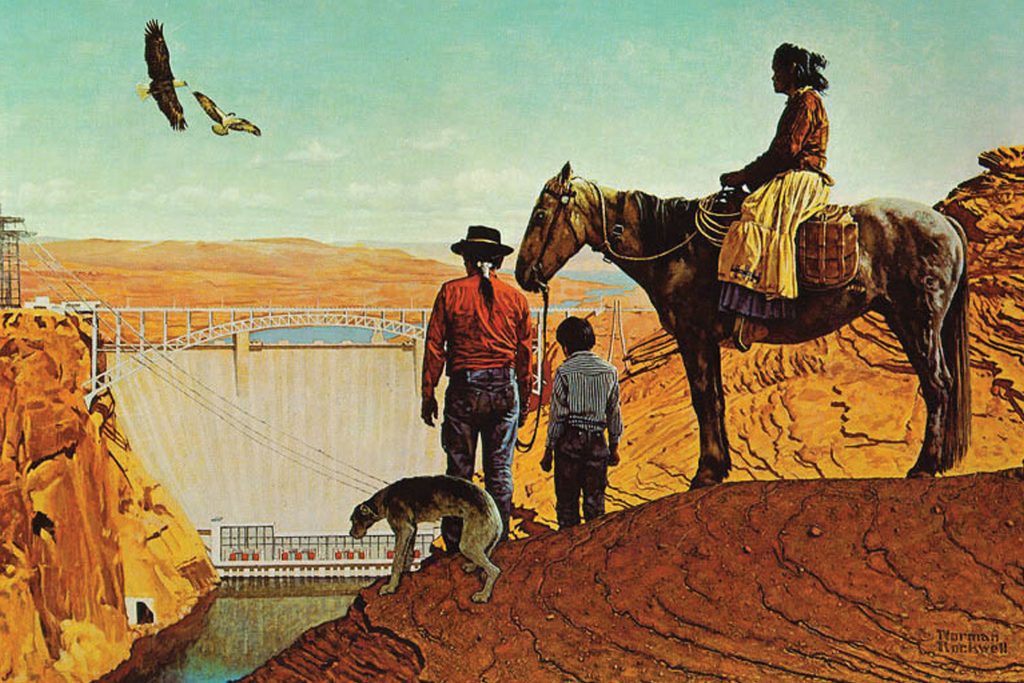
When Moses Parted the Bronx
Few rival urban planner Robert Moses when it comes to grand schemes. As the father of New York City’s vast parkway system among other mega-projects, Moses used near-dictatorial powers in the mid-20th century to bulldoze whole neighborhoods and carve out wide swathes that became the Cross-Bronx Expressway, the Brooklyn-Queens Expressway, the Staten Island Expressway and so on.
Shelton says Moses is a prototypical example of planners in the 1950s and ’60s who favored cars over other types of transit and with whom politicians made decisions in concert with their close friends in land development. Ordinary citizens were rarely involved.
There were a number of unintended (and perhaps intended) consequences of this type of planning, including the division of cities along racial and economic lines and the car and truck exhaust that enveloped many cities in a sickening, yellowish-gray haze.
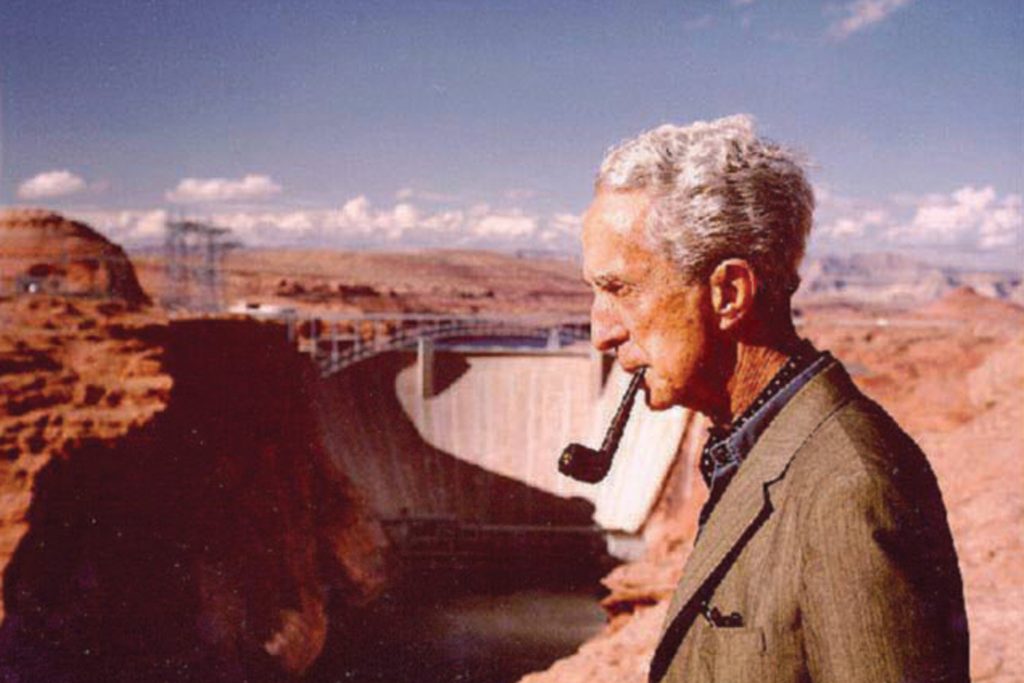
Another unintended consequence of the car culture is the staggering costs of maintaining and improving all of the roads on which we are now so dependent.
“The reason we have so much highway infrastructure that’s so hard to maintain comes from political choices to create a landscape that is devoted to car travel,” Shelton says. “That’s why the answers are not going to come exclusively from STEM. We need to assess the system that we have, and then we need to consider how to change the future trends in ways that will be more thoughtful and sustainable. That’s a combination of policy decisions and engineering solutions informed by past experience.”
For example, Shelton says that simply widening a road is not a sustainable solution, and it is instructive to look at the historical and social aspects that lead to the failure of an engineered approach such as widening roads.
“There are very few roads in the U.S. that are not almost immediately at capacity once they are opened. It’s a perfect example of a lack of sustainability as an infrastructure choice,” he says. “It’s the principle of induced demand. Say I am living in Katy and currently taking the park-and-ride bus to Houston. Then I hear that I-10 is being widened, and so I think ‘Great, there will be less congestion’ — but so do 4,000 other drivers, and very soon the new road is congested.”
Shelton said the goal of planners should be to create a comprehensive system that gets traffic moving more freely by embracing many types of traffic infrastructure — to serve cars, mass transit, bikes and pedestrians.
“Now we see this impulse to move back downtown, so we need to account for both patterns (suburbs and downtown) while correcting historical mistakes,” Shelton says. “There are lots of transportation options that up until now have not been tried or embraced. That is the place where engineers and infrastructure professionals and planners and historians and political scientists can all work together to think about challenges as metropolitan and regional in scale. Infrastructure debates are a good venue for people to talk about how they envision their city and their place in it.”

For that to happen, people have to stop thinking about problems as being isolated when they really are all connected, says Bsumek. She is concerned by some of the thinking that comes out of Silicon Valley that suggests something must be destroyed in order to build something else (Facebook CEO Mark Zuckerberg’s prime directive to his developers in 2009: “Move fast and break things. Unless you are breaking stuff, you are not moving fast enough.”)
“That kind of thinking doesn’t always enrich our society,” Bsumek says. “The problem isn’t how do we disrupt more things or break things into even smaller pieces and start over; rather, it’s how can we reconnect existing pieces in ways that help us see our world in a different way?” Students can become innovative problem solvers by making such connections.
She says that is why it is so important not to have all history majors or engineering majors in her class. “I try to pull from many different departments around our vast campus — then I ask the students to consider what their discipline has to bring to the table that can help us see something new about New Orleans after Hurricane Katrina. What were the civil engineers thinking, and what was the environmental and social impact?”
By investigating the past, says Bsumek, we begin to see all of these issues from different perspectives, not in isolation but in conjunction with one another.
“A big reason why some students dislike history is they can’t connect it to their primary discipline and, more importantly, they don’t see how it’s connected to their lives,” she says. “It seems like a bunch of dates and facts that they have to memorize, but history is exactly the opposite of that — it’s incredibly dynamic. It’s in everything you touch, everything you read, every song you hear, every bridge you drive across and every building you enter.”
